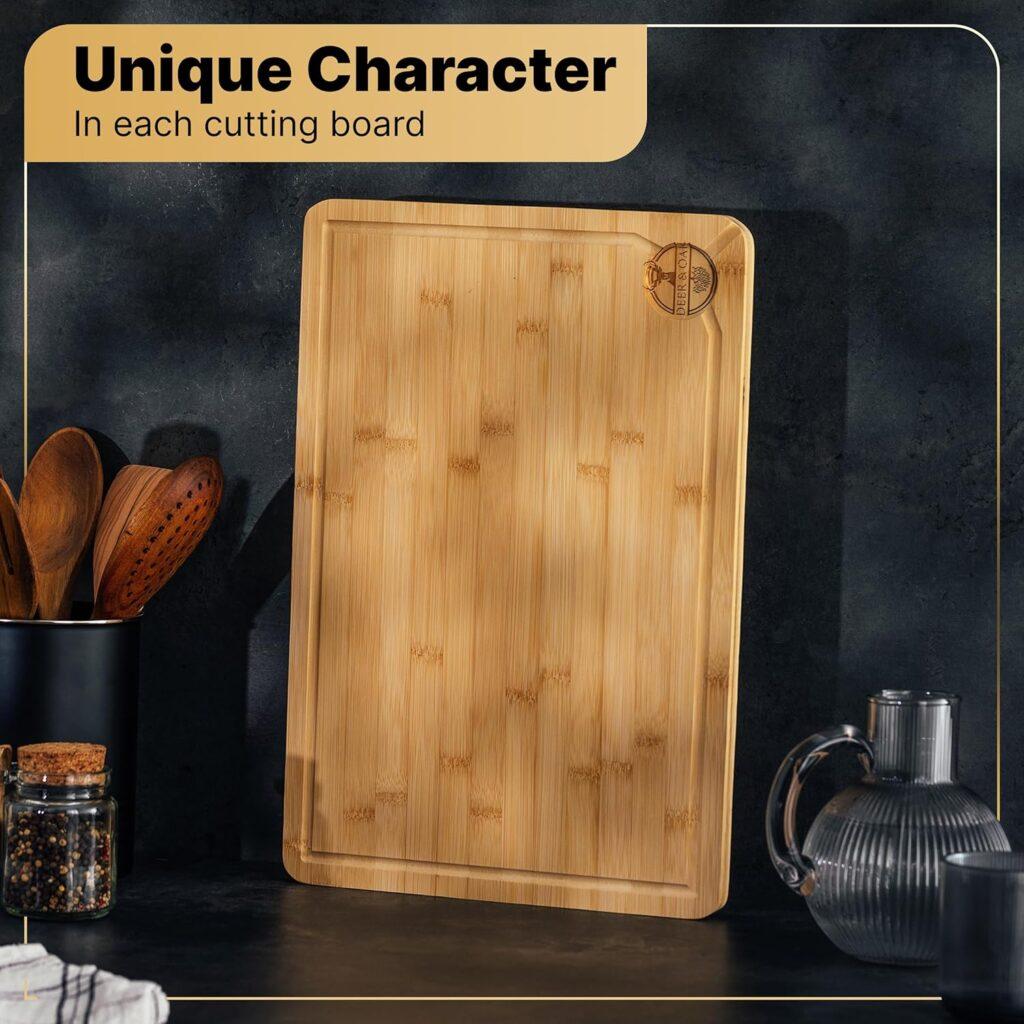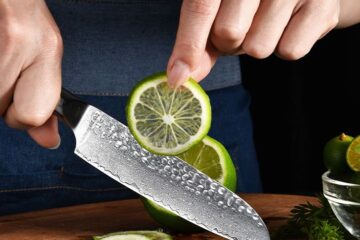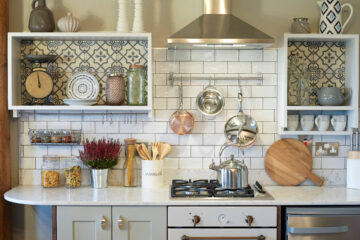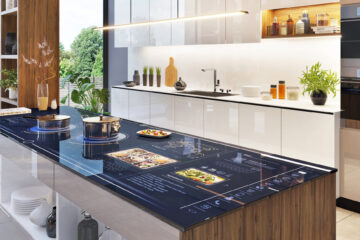While you’re technically cooking up something delicious, the behind-the-scenes hero of the chopping board does all its work much harder than you’ll ever realise. The board does all this magic on your behalf—all this dicing and slicing, carving and prep. So, when you stand in front of the kitchenware section (or scroll through your phone), there’s one gigantic decision to make: wooden chopping board or plastic?
Both knives have their enthusiasts and their list of benefits. But if you require the best chopping board for meat or the best for vegetables, welcome to the right place. In this blog, we will discuss the benefits and drawbacks of both, discuss hygiene and durability issues, and help you choose the best chopping board for your kitchen.
Why Your Chopping Board Matters
A good chopping board is more than just a flat surface. It impacts:
• Knife longevity (a too-hard board can dull your blades)
• Hygiene (especially when dealing with raw meat or fish)
• Prep space organisation
• Food safety and cross-contamination prevention
Whether you’re a casual cook or a culinary enthusiast, having the right chopping board for the right task will streamline your food prep and protect your investment in kitchen tools.
Wooden Chopping Boards: The Classic Choice
Pros:
• Delicate on Blades: Wooden boards protect the blade edge of your knives.
• Antibacterial by Nature: Teak and maple hardwood boards are naturally antibacterial in nature.
• Firm and Strong: Good wood boards may live for decades.
• Elegance Factor: Come on—admit it—they simply look more stunning perched on your countertop!
Cons:
• Maintenance Required: Has to be oiled regularly to prevent cracking or drying.
• Not Dishwasher Safe: Hand wash only for these.
• Most likely to Pick Up Odour and Liquids: Especially for porous kinds of wood.
Best for: Fruits, bread, herbs, cheeses, and as the best chopping board for vegetables
Most cooks prefer a wooden chopping board due to its stability and comfort when cutting with knives, thus its general application in the kitchen.
Wood is also sustainable, especially if made from responsibly sourced timber. Bamboo boards, while technically a grass, fall under this category and are a popular eco-friendly choice.

Plastic Chopping Boards: The Modern Option
Pros:
• Inexpensive and Light: Light and easy to handle.
• Dishwasher Friendly: Makes cleaning easier.
• Non-Porous: Doesn’t absorb water, reducing the risk of bacterial growth.
• Colour Coded Options: Excellent for avoiding cross-contamination (e.g., red for meat, green for vegetables).
Cons:
• Can Create Deep Grooves: These may shelter bacteria in the long run.
• Less Durable: They may warp or degrade sooner than wood.
• Can Dull Knives: Especially cheaper, harder plastic boards.
Best for: Raw meat, chicken, and fish—so making it the best cutting board for meat from the hygiene point of view.
Plastic boards are generally favored by health officials for cutting meat because they can be washed entirely in the dishwasher.
Comparing Key Features Side-by-Side
| Feature | Wooden Chopping Board | Plastic Chopping Board |
| Knife-Friendly | Yes | Not always |
| Dishwasher Safe | No | Yes |
| Antibacterial | Naturally | Only if cleaned well |
| Maintenance | Needs oiling | Low maintenance |
| Durability | Long-lasting | Shorter lifespan |
| Style | Elegant look | Basic design |
| Best For | Vegetables, fruit, bread | Raw meat, poultry |
Which Is the Best Chopping Board for Meat?
Hands down, plastic boards are your best bet for handling raw meat. Why?
- They’re easy to sanitise.
- Most are dishwasher safe, which kills germs effectively.
- You can have dedicated colour-coded boards to avoid cross-contamination.
Plastic boards also come in sets, allowing you to use a separate board for every type of ingredient (meat, fish, veg, dairy). This makes it easier to implement proper kitchen hygiene at home.
If you do prefer the feel of a wooden chopping board, make sure it’s cleaned with a vinegar or salt scrub after handling meat—and always use separate boards for meat and vegetables.
Which Is the Best Chopping Board for Vegetables?
This is where the wooden chopping board shines. It offers:
- A smooth, gentle surface for fine slicing
- Better grip and control
- A natural look that elevates your kitchen aesthetic
Wood is perfect for chopping herbs, slicing onions, dicing garlic, or prepping a fresh salad. Wooden boards also stay in place better due to their weight, which is particularly useful when chopping with speed or precision.
Hygiene & Food Safety: What You Need to Know
Regardless of material, the key to safety is proper care.
Plastic Board Tips:
- Replace when heavily scarred
- Sanitize regularly with boiling water or bleach solution
- Use colour-coded sets to keep things organized
Wood Board Tips:
- Oil regularly to maintain moisture resistance
- Clean with lemon and salt or vinegar
- Dry standing upright to avoid warping
Bonus Tip: Use a grip mat or damp towel underneath your board to prevent slipping.
Pro Tips for Buying the Right Chopping Board
When shopping for a new board, keep these tips in mind:
- Size Matters: Make sure it’s big enough for your usual prep work
- Material First: Choose based on the foods you cook most
- Dual-Board Setup: One for raw meat, another for veg and bread
- Grooved Edges: Great for catching juices when cutting meats
- Reversible Boards: Flip for clean surface between tasks
- Weight and Grip: Heavier boards stay put; look for rubber grips on lighter ones
How Many Boards Do You Need?
Each kitchen should include at least two chopping boards:
• One wooden chopping board for vegetables, fruit, and cooked food
• One plastic chopping board for raw meat, fish, and poultry
For avid cooks or large families, a four-board arrangement is optimum:
• Red for meat
• Blue for fish
• Green for vegetables
• Brown or wood for cooked food and bread
This arrangement avoids contamination and makes preparation a breeze.
Let’s Chop to the Point
The choice between a wooden and plastic chopping board is not a one-size-fits-all decision. Both share their strong suits:
• Choose plastic if you value hygiene, ease of cleaning, and preparing raw meat—it’s the best chopping board for meat.
• Stick with wood if you like precision cutting, want a durable board, or need the best chopping board for vegetables.
At the end of the day, the best arrangement could be a bit of both. To have a wooden board for daily chopping and a plastic one for meat keeps your kitchen efficient, safe, and clean.
Get good boards, take care of them, and they’ll take care of your food—and your knives!
Happy chopping!


